I regularly get asked what I do for a living. I am technically still a diagnostic radiographer, although my official title is Improvement Manager. Quite often, this answer creates a quizical look on the faces of those I support, with the next words being ‘… is what you’ve helped me with, improvement then?”. Much like ‘innovation’, the word ‘improvement’ means many things. Discovery, exploration, improvement, innovation and protection are separate things (maybe best discussed in another blog, but there are some already out there). I think most of my work is development.
The other end of the scale is when people call me an expert in a subject I am helping them with. Nope, not me, no thanks. The term expert doesn’t sit well with me; I know it’s a compliment but it still doesn’t reflect what I do. I wouldn’t call myself an expert in either Diagnostic Radiography or Improvement, and when I begin working with someone I tell them I will have more questions to fill my deficit of knowledge around the subject they are helping me with. This helps with understanding the context of the work.
The best description someone has labelled me with is ‘diagonalist’ or ‘versatillist’. Which is why ‘butt’ in the title is not a spelling mistake but a call to the Welsh term for ‘mate’ – ‘butt’ or ‘butty’. The work becomes a partnership.
Down the coal mine you would be paired up with another miner, your ‘butty’. Working in pairs not only made the work easier but if an odd number of men returned to the top, someone had been left behind.
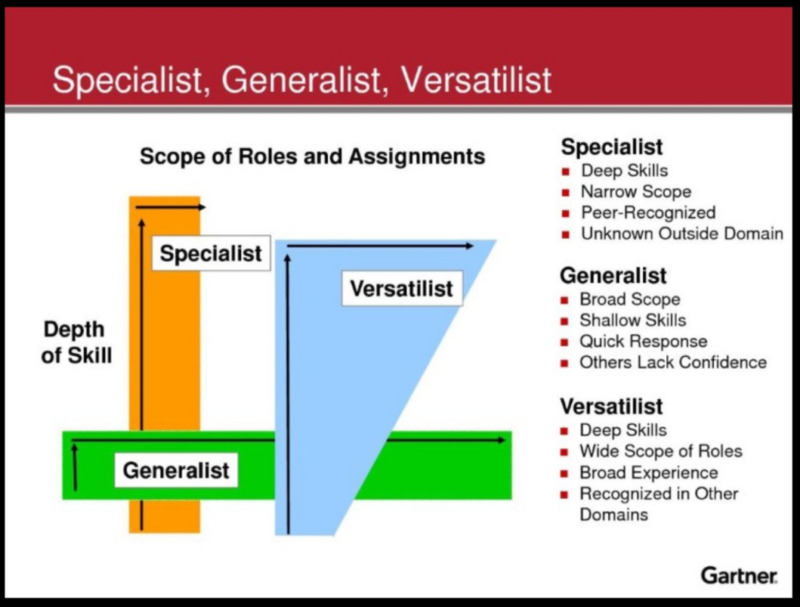
‘Versatillist’ describes someone who has a good general knowledge of something which most radiographers must have – physics, biology, modalities, disease, other departments etc. Normally, we go on to specialise; I started in Nuclear Medicine and then spent six years in MRI. During this time I started learning about Improvement and then moved into Complexity Science. It was while I was on a secondment as a Service Improvement Manager that I ‘discovered’ Complexity for myself and was lucky to have some guides. Its like taking the red pill in the matrix, you can’t go back and you have to find it for youself rather than being made to learn it.
Applied Complexity
Complex doesn’t necessarily mean difficult, it’s a word that can be used to describe a ‘system’ with certain properties. It is no more difficult than a complicated system or an ordered one. I use the Cynefin framework (Snowden, 2012) to help me understand the properties of these domains which, in turn, helps me understand where a piece of Improvement might sit, where it should be and what we can do to get it there. So, people who think they are more intellectual than someone who is a lean six sigma black belt because they study complexity baffle me. If anything, I’d want to connect with the black belt, and harness their knowledge the next time I came up against an issue they could help with. The cognitive load to learn either is the same as you go through the specialisation.
The trick is to make sure that this is in partnership with the person, so they understand the importance of the context and that there is no perfect method or framework. The best advice I’ve been given is to ask “Who invented it? And what was it used for?” If the inventor is credible in their field and the context at least holds a resemblance, you are probably going to be ok.
Further to this, it’s important to keep in mind that ‘everyday is a school day’. By learning in partnership I have learned more about pharmacy than I ever imagined I would and now I understand chronic conditions better than I did as a radiographer. I have also picked up statistical methods that neither I, nor my A level Maths teacher, ever thought I would ever use.
There are various branches of complexity, as illustrated in the map below. Often people working in complexity are considered ‘theorists’, but I’d say I am a practitioner applying complexity to Public Health, Innvoation and technology and organisation or knowledge management. I have an appreciation of the different ‘sciences’ but also understand that the application of any method depends on the type of system it belongs to, i.e. knowing when to apply lean six sigma, and when not to. Equally, not everything needs a complexity method – if it’s a process that needs improving, bring in the black belt. So maybe its best to learn a bit of each but perhaps specialise in one of them – become a diagonalist.
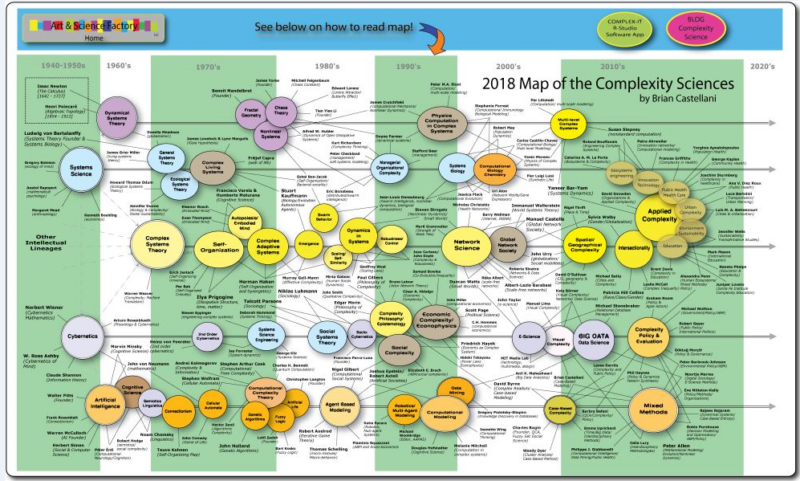
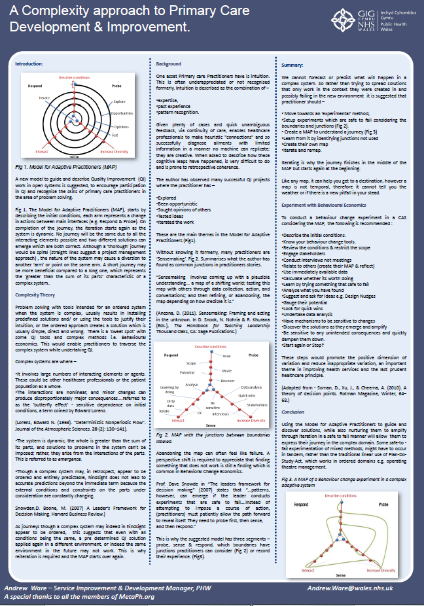 At an Oxford College workshop called ‘We need to talk about complexity’, I presented a poster entitled ‘A complexity approach to Primary Care Development & Improvement’. It explored how the way I was working enabled me to successfully support others, leading to great pieces of work that went on to be nominated or become finalists for national awards.
At an Oxford College workshop called ‘We need to talk about complexity’, I presented a poster entitled ‘A complexity approach to Primary Care Development & Improvement’. It explored how the way I was working enabled me to successfully support others, leading to great pieces of work that went on to be nominated or become finalists for national awards.
The key message of the poster is that everybody has a unique Improvement journey, so I called it MAP (A model for adaptive practitioners).
After developing this for a little while I came up (probably accidentally) using the Immediate Life Support acronym – ABCDE. Advice (improvement, evaluation, method, decision making), Brokering (networking, complex network theory and connecting people), Coaching (coaching individuals through improvement projects), Doing (usually Data or hands on support) and Education (in the form of talks or workshops; Behaviour Change Theory, Opportunity Costing etc).
My line manager flagged a similar model he’d come across, pictured below.
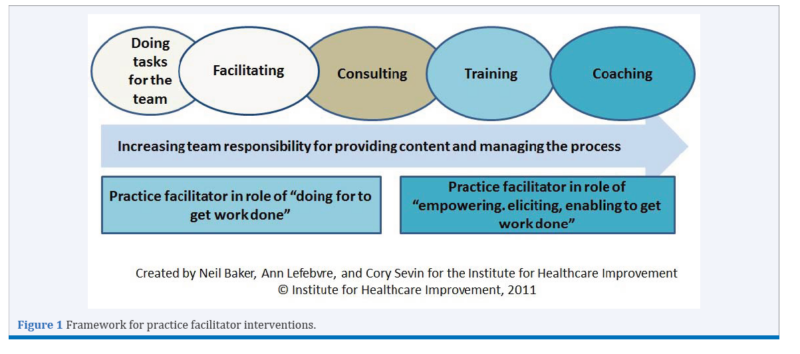
Whilst this is a great model, in my opinion it is quite linear. The arrow from left to right suggests that they will go through these things, supporting them first and then later building in sustainable skills in exchange for a consultancy fee.
In my experience, some people just need a little help – maybe a bit of C & E – and some people need ABCDE and they might return with a different problem and an entirely new context meaning they need the whole ABCDE again. When a solution emerges, I might intentionally connect (Broker) them to others to share their knowledge. I avoid use of the word ‘scale’, as that suggests the work can be made bigger, whereas some work is contextual and cannot be scaled. This relies heavily on local context, where some solutions are context free and therefore can be scaled en masse. This in itself comes from studying Scaling and if you’re interested in finding out more, there is a fabulous book I’d recommend by Prof. Geoffrey West of the Santa Fe Institute for Complexity.
This forms the basis of the Q Exchange project on repeat prescribing. Having coached one or two people, I’ve found this works well (ACD), so the hypothesis would be: does it work at scale? So now it shifts to a BE. Upon request we can offer ACD. We have delivered two workshops, the evaluation shows it’s promising and I’ve visited some practices to give a little bit of extra help.
The diagram below on the left is an OVAL Venn diagram showing all the permutations of the ABCDE offer. It illustrates how the various elements of this model interact. For example, if someone was in a chaotic state, I might help them find a way to create some head space, give advice and connect them to others, but coaching and a workshop are the last things on their mind. The diagram on the right is a simplified version – like a dial, switching it to the needs of the ‘improver’ depending on their needs.
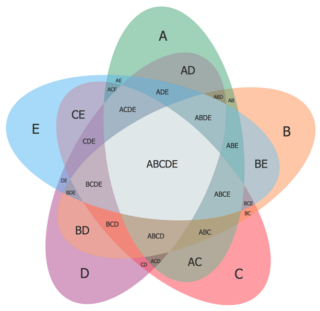
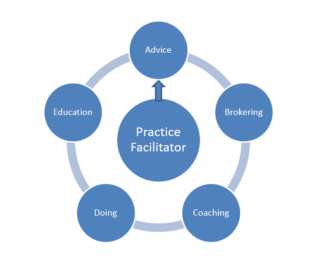
So where am I going with this? Here are some key points to summarise:
- Work in partnership and don’t leave people behind
- Learn something different; expand your skill set and become more versatile
- Don’t apply something you have learned just because you can
- Context is king
- Tailor your offer of support to the person you’re working with.
- Know your domains
- Connect to those around you and use their skill set
Comments
Jack Steadman 12 Jul 2019
Hi Andy,
Just wanted to thank you for an enormously educational blog post - I was wondering if it would be possible to obtain higher resolution images of the first two images? I'd be very interested in examining these in further detail.
Thanks and best wishes,
Jack Steadman
Andy Ware 12 Jul 2019
Hi Jack,
Thank you so much for your comment.
I'll do you one better. I didn't know about this on Google until I asked a Comms person how I could get better resolution images (these were the best I could get to fit at the time).
Right click and save the images above, and then on Google in the top right hand corner, click images, you then 'upload images' using the ones you just saved and Google will find where it has been used for you.
You can tweak the search to find higher resolution images, but you might miss out on some great websites.
Happy hunting!
Regards
Andy